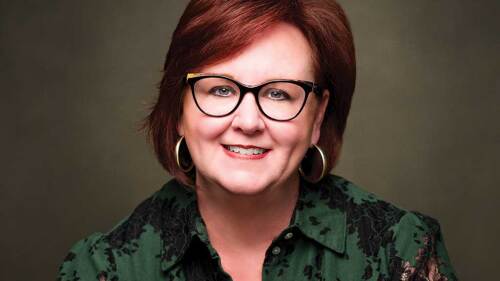
From left to right: Kenton McKeehan, managing director, retail resources group and investment management, at Hines; Melanie Ferguson, director, special projects, at Matthews Southwest; Mark G. Bulmash, senior vice president of the Howard Hughes Corporation; moderator Catherine Cuellar, a catalyst in community and communications, with catherinecuellar.com; and Sarah Kimes, associate vice president at CallisonRTKL, speaking during the Mall of the Future: Catalysts for Community Regeneration session at the 2016 ULI Fall Meeting in Dallas, Texas.
Aging shopping malls—many burdened with high vacancy rates or even abandoned—are being transformed into vibrant, mixed-use destinations that are connected to their surrounding communities. Once-popular regional shopping malls are being hit from all angles: by the explosion of online shopping, millennials’ preference for vibrant urban experiences, and ever-changing retail customers’ tastes. At the 2016 ULI Fall Meeting in Dallas, “the mall of the future” was explored by a panel of design, development, and placemaking experts.
Sarah Kimes, an associate vice president with design consultancy CallisonRTKL, (download presentation) discussed her firm’s recent study of how aging mall sites might present opportunities for community regeneration. Her company’s team developed conceptual transformations of five older shopping malls in the Dallas metropolitan area. The design teams were given no budgetary or feasibility restraints. The results presented food for thought:
- Ridgmar Mall in Fort Worth: Build a lake on the site and connect the site to surrounding uses.
- Irving Mall: Bring housing and an airport-connected transit center onto the site.
- Vista Ridge Mall in Lewisville: Make it plug-and-play adaptable and sustainable.
- Collin Creek Mall in Plano: Bring back the creek and redevelop the mall with a mix of uses.
- Six Flags Mall: Turn it into a drone port! And add on-site urban farming.
“What all these concepts had in common was a flexible, nimble program with diverse uses,” said Kimes. “In the future, malls will be integrated with their surrounding communities; there will no longer be a delineation between the mall and the city. And these sites will have a thriving natural landscape, rather than being seas of concrete.”
Kenton McKeehan, a managing director with Hines, agreed, saying: “Each shopping mall is a micro-economy, which must be sustainable and competitive beyond the obvious challenges such as internet sales. Malls of the future must address consumers’ needs easily so that they don’t have to go elsewhere. The success of malls will be driven not so much by thin retail profit margins, but instead by a mix of uses.”
Repositioning shopping malls is easier said than done, noted Mark Bulmash, a senior vice president with the Howard Hughes Corporation, whose company is reimagining New York City’s South Street Seaport after Hurricane Sandy took care of the demolition phase. In the absence of a natural disaster, developers can’t just wave a magic wand to update tired shopping destinations. Department store anchors often have 75-year leases and other legal documents that must be “unwound” before a developer’s vision can even begin to be realized.
“Stores want to monetize their assets,” said Bulmash. “You have to talk them into selling their properties or convince them to agree with your plans.” Added McKeehan: “Sometimes these guys are just not going to move, and you have to work around them.”
While regional suburban shopping malls present a unique set of issues, many of their owners’ challenges are shared by the entire retail sector. The good news for bricks-and-mortar retailers is that only 10 percent of U.S. retail sales are purely online, and even the most successful online retailers are expanding their physical presence so that customers can see and touch their wares. How can retailers make their offerings so compelling that customers will come to them?
One answer is to curate the entire customer experience in the shopping destination, including food, entertainment, and programming. Dining is becoming a draw for tourists, with travelers choosing hotels based on their proximity to restaurants they want to try. But retail destinations can easily become oversaturated with overpriced dining options. Some retailers are exploring use of technology to augment customers’ experiences: for example, mirrors that show what garments would look like in other colors. The idea is to create experiences that are not replicable online.
All of these trends mean that developers need to change the ways they plan projects. “Good cities grow to meet demand, but developers don’t think that way,” said McKeehan. “We end up building assets that exceed demand.” By transitioning mall sites to a mix of uses, he posited, developers can help create consumer demand within the vibrant, modern micro-economies that will become the nonmalls of the future.





